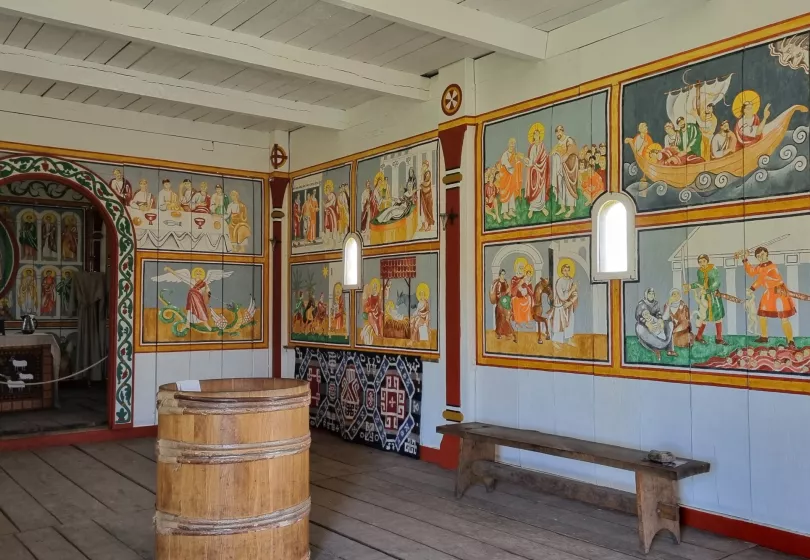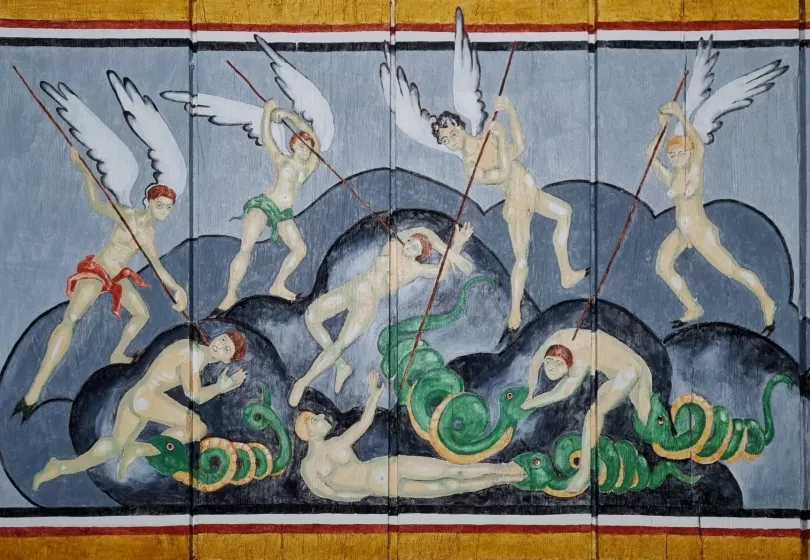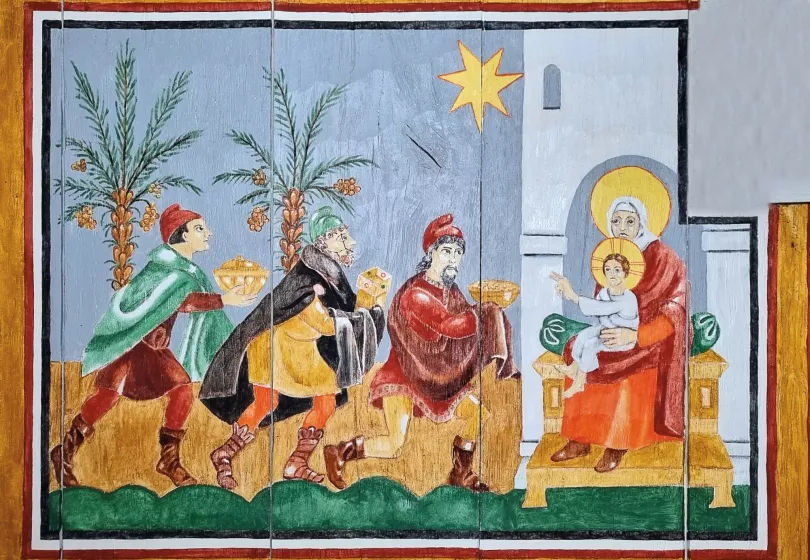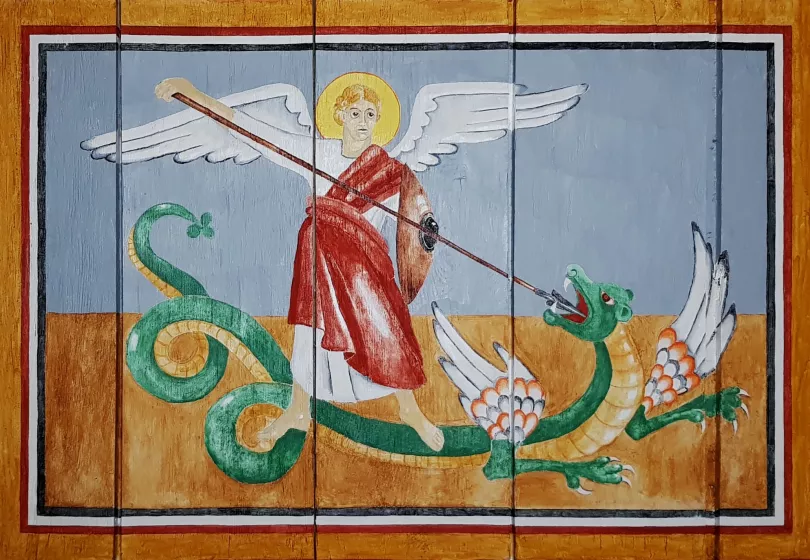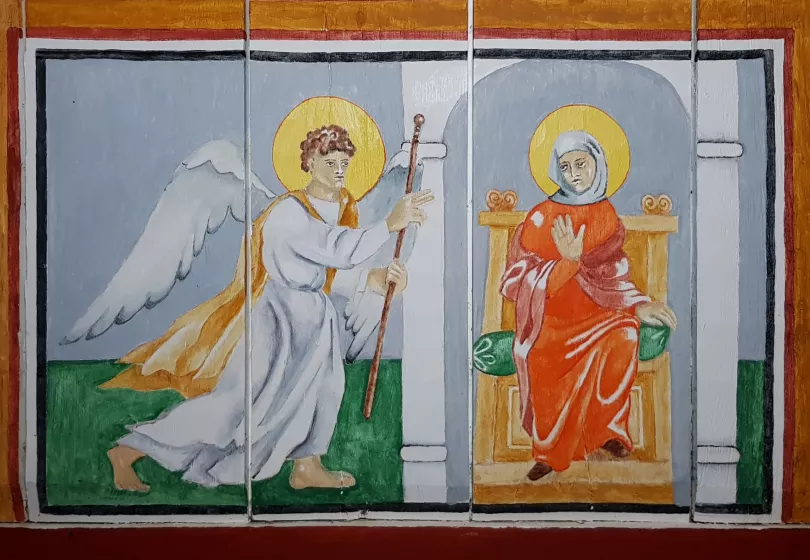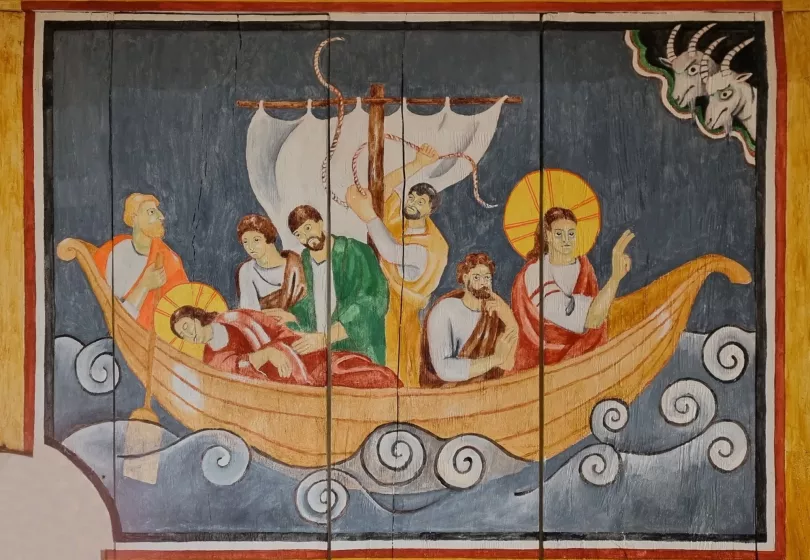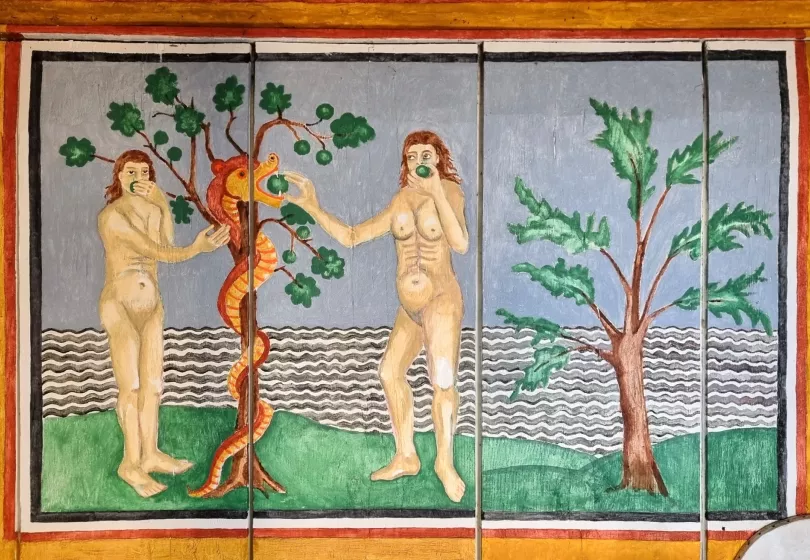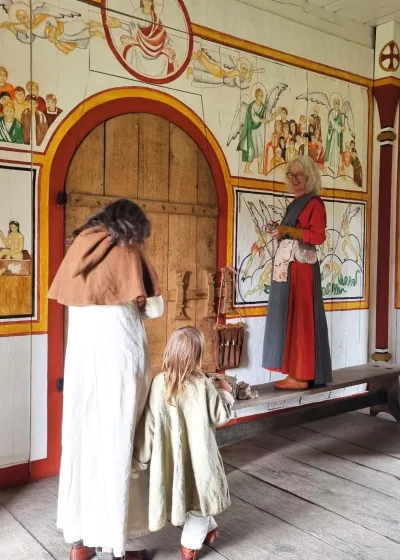The first church in Ribe
It was bishop and missionary Ansgar who introduced the Danes to Christianity in the Viking Age. In the middle of the 9th century he received the permission to build a church in Ribe, which was the first in present Denmark.
In Ribe VikingeCenter we explain about Viking Age Ribe from around 700 AD until 1000 AD. For the same reason we have constructed a church to show how Ansgar's wooden church very well could have looked like.
An image says more than a thousand words
Even at that time, the visualization of the Bible stories was regarded as essential to the success of the Christian message. As we aim to create a typical 9th century church interior, we have had 50 Carolingian style scenes from the Bible painted on the walls of the Ansgar Church.
The paintings complete the atmosphere of the dimly lit Ansgar Church and they create a powerful setting for communicating the circumstances of the early Christian introduction. We hope the visitors to the church will get a sense of the ambience and impressions that embraced the first Danish churchgoers.
Motifs and style
The motifs derive from Christian books of that time and the few remaining church walls of the same period. Carolingian art (about 780-900 AD) is more naturalistic and less solemn than the early Romanesque style we know from the oldest existing murals in Denmark.
For the paintings we used egg tempera and colours which were used in Denmark during the Viking Age, e.g. ochre, charcoal and umbra. White, orange and lemon yellow were also popular colours, but as they contained poisonous lead or arsenic, we have these colours made with different pigments today.
Research, sketching and painting has been executed by visual artist Trine Theut.


